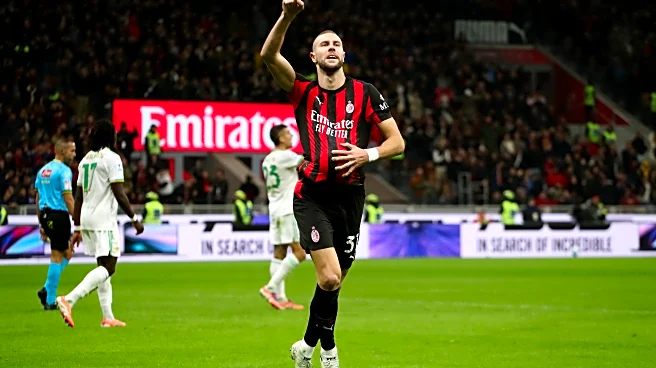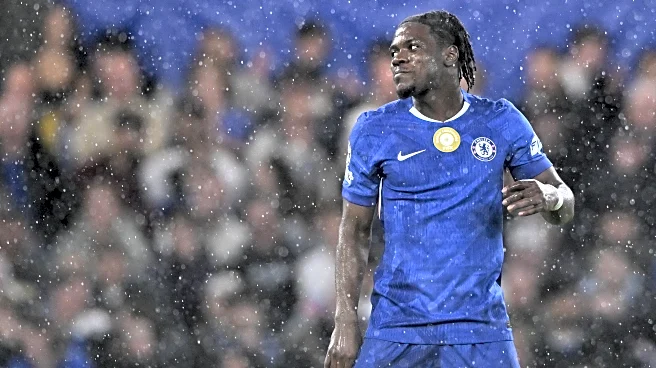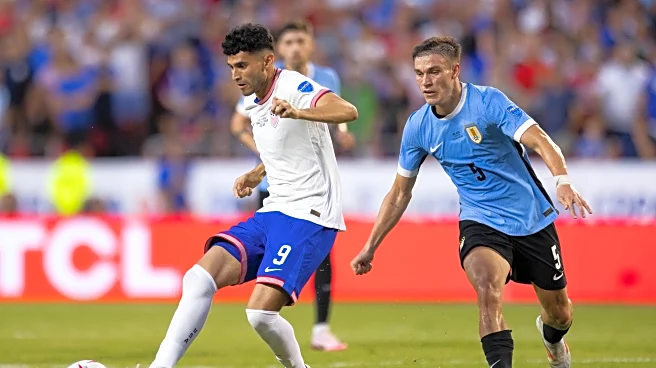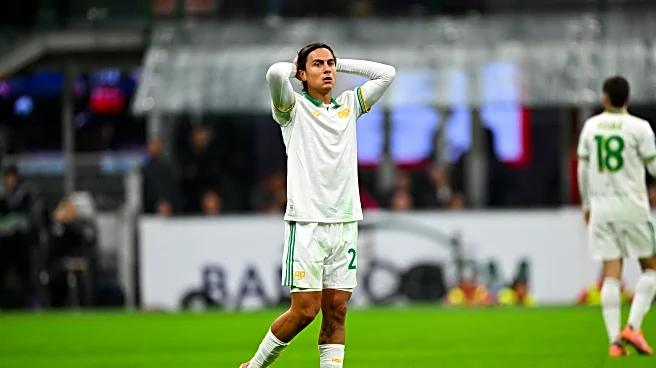What's Happening?
Christian Pulisic, a key player for the U.S. men's national soccer team, is set to return to action with AC Milan after recovering from a right hamstring injury. Pulisic sustained the injury during the U.S. team's
2-1 victory over Australia on October 17. Despite not being included in the U.S. squad for upcoming friendlies against Paraguay and Uruguay, AC Milan's coach Massimiliano Allegri confirmed that Pulisic is fit and available for the Serie A match against Parma. Pulisic has been in excellent form for Milan, scoring six goals in eight appearances, contributing significantly to the team's third-place standing in the Serie A, just one point behind Napoli.
Why It's Important?
Pulisic's return is crucial for AC Milan as they aim to maintain their competitive edge in the Serie A. His performance has been instrumental in Milan's strong league position, and his recovery could bolster their chances of overtaking Napoli. For the U.S. national team, Pulisic's absence from the friendlies allows him to focus on full recovery, ensuring his availability for future international competitions. This decision reflects a strategic approach to player management, prioritizing long-term health over immediate participation, which could influence how other teams manage player injuries.
What's Next?
AC Milan will face Parma in their upcoming Serie A match, with Pulisic expected to play a pivotal role. His performance will be closely watched as Milan seeks to climb the league standings. Meanwhile, the U.S. national team will proceed with their friendlies without Pulisic, providing an opportunity for other players to step up and demonstrate their capabilities. The team's management will likely continue to monitor Pulisic's recovery, ensuring he is fully fit for future international duties.
Beyond the Headlines
Pulisic's situation highlights the ongoing challenges athletes face with injuries and recovery. It underscores the importance of strategic player management in professional sports, balancing immediate team needs with long-term player health. This approach may influence broader sports management practices, encouraging teams to prioritize player well-being to sustain performance levels over time.












